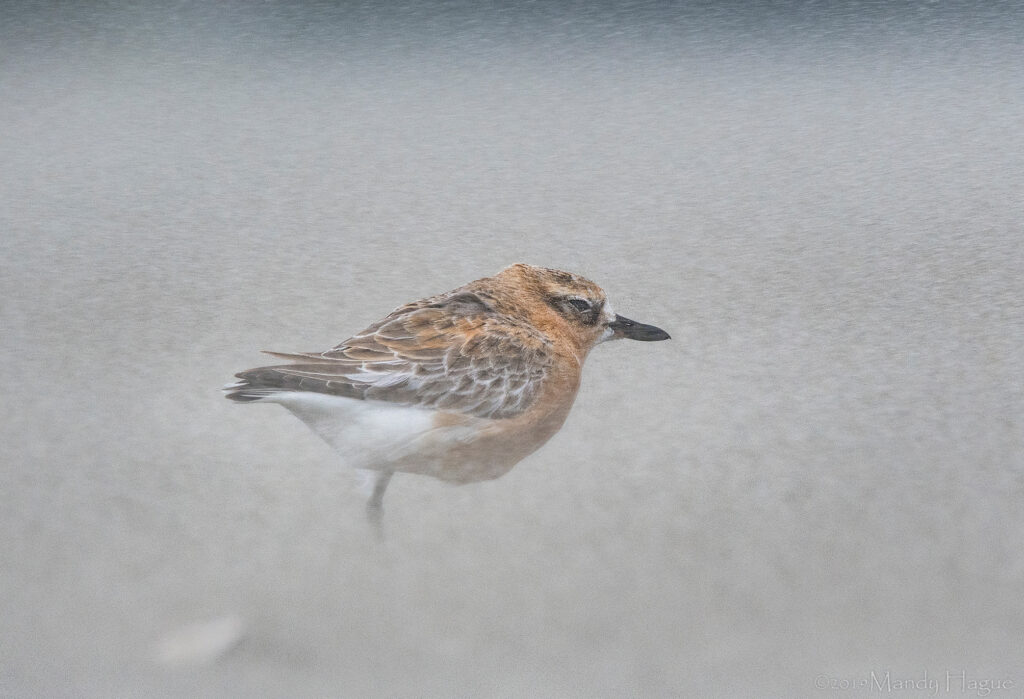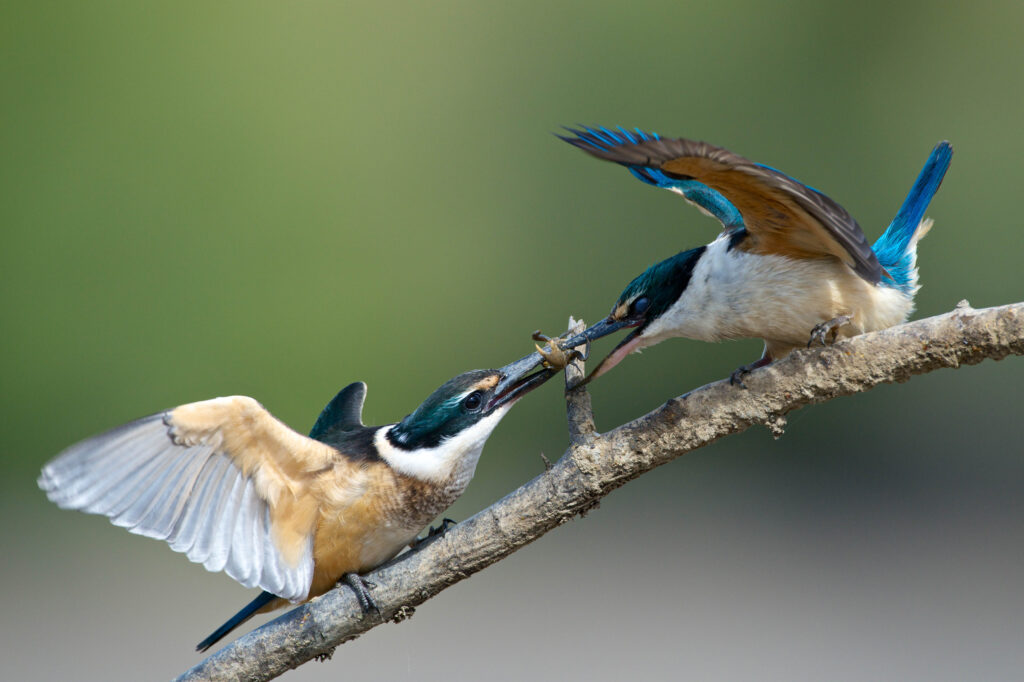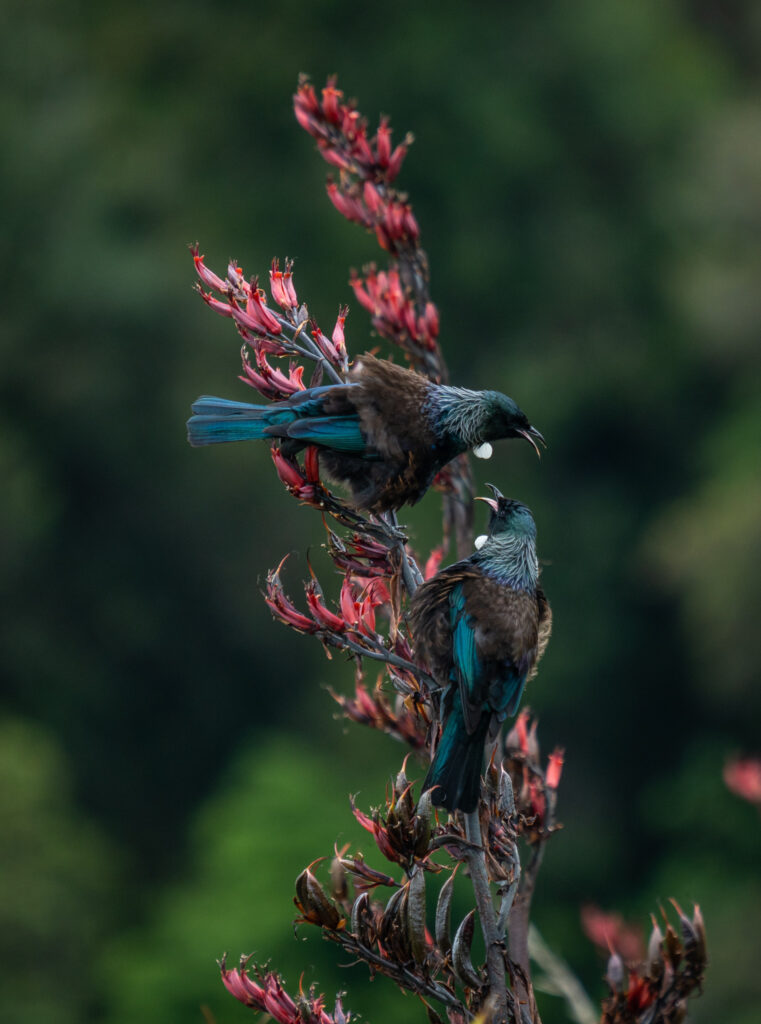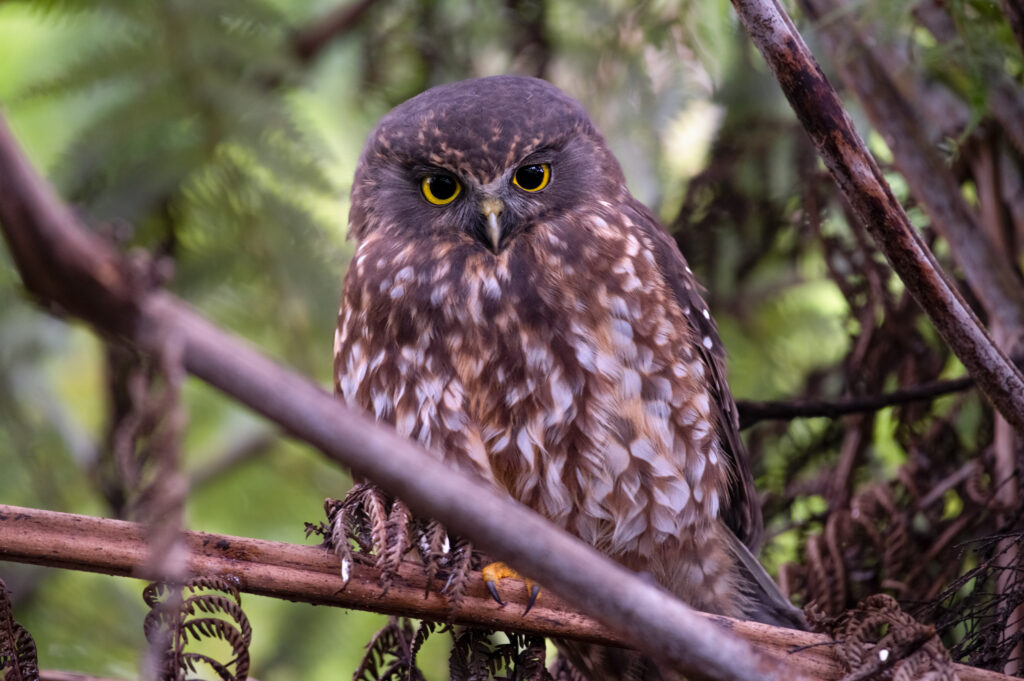Wildlife photographers reveal the untold stories behind their stunning shots, and we launch our first-ever, Shoot Your Shot competition with Photo Warehouse (now closed).
For every stunning wildlife photo you see, there’s a story.
When the opportunity for an incredible photo arises, it’s fleeting – just a moment to capture the moment. When it happens, it can be awe-inspiring, but more often, it’s about connecting with nature itself.
Five wildlife photographers share their behind-the-scenes tales.
The determination of the dotterel
Mandy Hague had been waiting for hours. Through bouts of sun, rain, wind, and everything else a temperamental spring day could throw at her, she waited.
For what exactly, she wasn’t sure. But as a wildlife photographer, she had to be poised for the perfect shot.
Mandy was staking out the Ōhiwa Harbour entrance at the southern end of Ōhope, in the Bay of Plenty. Then she spotted it.
“I found a beautifully coloured tūturiwhatu (dotterel).
I was lying on my tummy while it remained stationary on one leg. I waited and waited. Then all of a sudden, a gust of wind caught us both in a sandstorm,” she recalls.
“It was very brief, and in a split second, I realised my eyes were closed when I should’ve been recording. I opened my eyes and got two images before the gust died away.”
In those few seconds, she captured what would become her favourite image to date.
“For me, it symbolises the struggle these birds are faced with and their vulnerability,” she says.
The kingfisher and the crab
Perched patiently in his photo blind near his Banks Peninsula home, Stephen Bradley had in mind one bird which had so far eluded him – the kōtare (sacred kingfisher).
“On this particular evening, everything came into place. For an hour or more, I had a pair of kingfishers catching crabs and feeding them to their young right in front of me,” he remembers.
Despite the scene playing out in front of his lens, it was still a challenge to get the shot he wanted.
“There was a lot of frustration and missed shots as I tried to capture the interactions in an interesting and balanced way. In the end, I got a shot I think is still one of my favourites,” he says.
Stephen believes seeing the world through a lens “makes you look at things differently.”
“It makes you take note of small details, like the way the light totally changes the scene. It makes you slow down and be patient – wildlife doesn’t follow your script.”
The falcons on the fence
He first saw them from a distance. A pair of kārearea (New Zealand falcon) resting on a fence up a steep hillside near Lake Tekapo. Lugging his camera equipment, Paul Sorrell made a “mad sprint” toward them.
The male would fly closer, settling on a rocky outcrop amid tussocks.
“As I walked slowly around him, careful to keep a respectful distance, I was able to take a series of shots that still leave me awestruck. Despite ignoring me completely, I felt a rare sense of contentment and connection that I will always treasure,” Paul says.
Paul’s been chasing these moments since first being mesmerised by photos in Animals magazine as a child.
“It seemed miraculous people could take pictures that were so intimate in capturing the lives of animals and birds in the wild.”
The timing of the tūī
“I know my gear and camera inside out, so I can change settings super fast. I always carry it myself, and it’s always set on a basic setting, ready to get the shot in any light.”
Sometimes a good photo opportunity appears when you least expect it. For Sandy Brinsdon, a self-confessed “opportunistic photographer,” the key is to be organised.
She recalls stopping at a reflecting pool along the South Island’s West Coast.
“While taking photos of the reflection, a group of tūī flew into a nearby flax bush. It was a quick drop of the camera set up for landscape, swinging the other camera around, point and shoot, and then they were gone.”
While she’s always been keen on the outdoors, Sandy says photography has made her appreciate it more fully.
“I see things now that I never noticed before. The importance of habitat, staying a respectful distance from wildlife, and remembering that no shot is worth disturbing wildlife for.”
The unexpected ruru
One day on a bushwalk in Tankekaha Bush, Aiden Kerr was reminded that sometimes, the best shots come when we least expect them.
The whole day passed, and while there was plenty of birdsong, he hadn’t yet seen any. Just as he was giving up to head home, a shadow silently flew by. Following it into the bush, Aiden was rewarded with the sight of a ruru (morepork) perched on a tree staring intently right at him with huge golden eyes.
“It was such an unbelievable sight,” Aiden says.
Wildlife can be unpredictable and frustrating at times, but the thrill of capturing a rare moment makes it all worth it.
“Patience plays a big role; many animals won’t move for a while after seeing or hearing a predator or a human.”
Tips for better wildlife photography
Mandy Hague: My favourite kit is my Nikon D500 with a Tamron 150-600mm lens for birds or Nikkor 105mm micro for insects. Learn how to edit to get the best out of your images.
Stephen Bradley: Don’t worry too much about having the most modern camera, but get the best lens you can afford.
Paul Sorrell: Apart from a long lens (300mm at least), get a sturdy tripod that provides stability and helps frame up your shot.
Sandy Brinsdon: Don’t get put off by the price of lenses. There are often secondhand ones available to get you started.
Aiden Kerr: My favourite gear would be my Nikon D850 paired with my Nikon AF-S 300mm 2.8. However, the ruru image was shot with my Nikon Z6 and the 300mm as having the mirrorless setup for this shot was best due to the lack of light in the bush.
Shoot Your Shot Competition 1 June – 30 June 2023 (now closed)
Share your best photo of native taonga, and you could be entered to win a prize pack from Photo Warehouse. Simply follow Predator Free New Zealand Trust (@predatorfreenz) and Photo Warehouse (@photowarehousenz) on Instagram and tag us both in a post with #shootyourshot2023 to be entered to win.
Alternatively, email your under 20MB photo and your name to [email protected] with the subject line, “Shoot your Shot”.
An esteemed panel of judges will review the entrants and award three prizes for 1st, 2nd, and 3rd place. Judges will examine the image’s composition, subject matter, originality and technical elements.
1st place will receive a Tenba Axis 32L Backpack (Black) with your work printed A3, 2nd a Tenba 638-483 Messenger DNA Bag 15 Slim (Cobalt) with your work printed A4, and 3rd will get Tenba 638-377 Messenger DNA Bag 13 (Cobalt) with your work printed A4. The deadline for submissions is midnight on 30 June.
Winners will be informed directly via email by Predator Free New Zealand Trust. Prizes are not to be redeemed for cash. Prizes include shipping to NZ residents only. All entrants agree to their images being used in unpaid promotions on social media channels.
About Predator Free New Zealand Trust: Founded in 2013, the Predator Free New Zealand Trust is an independent charitable trust that works alongside various agencies, organisations, and groups, all with the shared vision of a predator free Aotearoa New Zealand.
About Photo Warehouse: Photo Warehouse, established in 1987, is New Zealand’s leading photography equipment and accessories retailer. They cater to amateur and professional photographers with a wide range of products and services. Their knowledgeable staff are passionate about photography and are always ready to provide expert advice.











